Within 1 KM of Napoli Domus
Within a 1000-metre radius of Napoli Domus, you can easily walk to and discover some of the most beautiful architecture and art in the world, millenary archaeological sites, the UNESCO World Heritage historical centre, and admire traditional Neapolitan handicrafts.

Borgo di Sant’Antonio Abate
The Borgo di Sant’Antonio Abate (‘O Bùvero ‘e Sant’Antuono in the Neapolitan dialect) is one of the oldest and liveliest neighbourhoods in the city, a district that has not undergone any urbanistic alterations since 1400. This suburb is famous for its traditional market, one of the largest and busiest in Naples, where fresh produce, fruit, vegetables and groceries are sold. The village takes its name from the Church of Sant’Antonio Abate, dedicated to the patron saint of animals, built in medieval times. Every year, on the feast day of Sant’Antonio Abate (17 January), the area becomes the scene of popular celebrations, with blessings for animals and religious events. In the past, the hamlet was an important crossing point for those entering the city, and even today it maintains a strong link with popular tradition, representing a place where it is possible to breathe in the authentic Neapolitan atmosphere.
Porta Capuana
Porta Capuana is one of the ancient city gates, built in 1484 during the reign of Ferdinand I of Aragon. It is located near Castel Capuano, and was an important access point to the city coming from the east. Despite its name, it was not directed towards Capua, but was symbolically linked to it. The structure, made of white marble, is a splendid example of Renaissance architecture. Its triumphal arch is framed by two imposing circular towers, called Torre della Speranza (Tower of Hope) and Torre della Vittoria (Tower of Victory), giving it a majestic appearance. Porta Capuana was a symbol of power and prestige for Naples, and today is one of the city’s main historical monuments.


Church of Santa Caterina a Formiello
The Church of Santa Caterina a Formiello, located near Porta Capuana in Naples, is an important example of Renaissance and Baroque architecture. Built in the early 16th century, it owes its name to its proximity to the Formiello, an ancient water channel.
The sober exterior contrasts with the richly decorated interior. The interior of the church, with a basilica layout, features valuable frescoes, stucco work and a majestic polychrome marble high altar. Of particular note are the paintings, including canvases by Francesco Solimena and other works of art from the Neapolitan Baroque period.
The church is also linked to the Dominican convent complex, with which it shared the area, and was an important spiritual and artistic centre for the city. Next to the church was the Lanificio di Santa Caterina, one of the most important cloth factories in Naples, linked to the economy of the Kingdom of Naples in the modern age.
https://it.wikipedia.org/wiki/Chiesa_di_Santa_Caterina_a_Formiello
Historic Centre
The Historic Centre of Naples is one of the largest and oldest in Europe and a UNESCO World Heritage Site since 1995. With a history spanning more than 2,500 years, it represents a veritable treasure trove of art, culture and architecture, bearing witness to the many civilisations that have influenced the city, from the Greeks and Romans to the Normans, the Angevins and the Aragonese.
The heart of the historical centre is characterised by an intricate maze of alleys and streets that follow the ancient Greco-Roman layout. Among the main arteries are Spaccanapoli, the lower decumanus, and the Decumano Maggiore. Along these streets are monumental churches such as the Cathedral of Naples, where the treasure of San Gennaro is kept, and the Church of Gesù Nuovo.
In addition to the churches, the historic centre is home to numerous historical palazzi and important squares, such as Piazza San Domenico Maggiore and Piazza del Gesù. Other attractions include the Monastery of Santa Chiara, with its splendid majolica-tiled cloister, and the famous Sansevero Chapel, with its famous Veiled Christ.
The historical centre is also famous for its markets, such as San Gregorio Armeno, known for the workshops of artisans producing traditional Neapolitan nativity scenes. The Historic Centre of Naples is a fascinating blend of ancient history, popular culture and lively urban life, where the past and present are uniquely intertwined.
https://www.italia.it/it/campania/napoli/cosa-fare/napoli-centro-storico

Basilica of San Paolo Maggiore
The Basilica of San Paolo Maggiore is one of the oldest and most important churches in Naples, located in the heart of the historical centre, in Piazza San Gaetano, above the remains of the ancient Roman temple of the Dioscuri (Castor and Pollux) dating back to the 1st century AD. Originally built in the 6th century, the basilica underwent numerous transformations, especially during the Baroque period, becoming a masterpiece of Neapolitan religious architecture.
The entrance to the basilica is characterised by the imposing Corinthian columns that once belonged to the Roman temple. The interior, in the shape of a Latin cross, is richly decorated with frescoes, marble and Baroque stucco work. Of particular note are the frescoes in the dome, the work of Francesco Solimena, depicting biblical scenes of great intensity.
The basilica also houses the tomb of St Gaetano Thiene, founder of the Theatine order, which made San Paolo Maggiore its religious centre in the 16th century. In addition to being a place of worship of great spiritual value, the church is a reference point for the art and history of Naples, thanks to its extraordinary fusion of classical and baroque elements.
*** Translated with www.DeepL.com/Translator (free version) ***
https://it.wikipedia.org/wiki/Basilica_di_San_Paolo_Maggiore
Napoli Sotterranea
Underground Naples has ancient origins, with the first excavations dating back some 5,000 years. However, the most important tunnels were built by the Greeks in the 3rd century B.C., exploiting the tenderness of the rock to obtain building material. Later, the Romans contributed significantly to the expansion of the underground network, digging tunnels to create a system of aqueducts that distributed drinking water throughout the city. Some of these conduits still show traces of hydraulic plaster, used to waterproof the tunnels. In the 20th century, the underground network, covering over 2 km², was abandoned, but reused during the Second World War as an air-raid shelter. Even today, objects and furniture from that period can still be seen, bearing witness to the living conditions during the bombing. The proposed routes are, the Greco-Roman theatre, war museum, contemporary art exhibitions, Tufello wine, and hypogean gardens.


The Monumental Complex of San Gregorio Armeno
The monumental complex is located in the heart of the historical centre of Naples and is an important testimony of Neapolitan Baroque art. Originally founded in the 8th century, the complex includes a church and a monastery. The church, dedicated to San Gregorio Armeno, also known as the Church of Santa Patrizia, is located in the historical centre of Naples and is a jewel of Neapolitan Baroque art. Santa Patrizia is one of the patron saints of Naples, venerated especially for the miracle of the liquefaction of her blood, similar to that of San Gennaro. The church is famous for its sumptuous interior, rich in gold decorations, frescoes and sculptures. One of the most significant features is the high altar, which holds the relics of St. Patrick. The link with the cult of the saint makes the church a spiritual reference point, attracting many believers for the celebration of the miracle, which takes place every year on 25 August. The monastery, inhabited for centuries by Benedictine nuns, houses an impressive cloister and important works of art. San Gregorio Armeno is also famous for the nearby Via dei Presepi, located between Via Tribunale and Spaccanapoli, a Neapolitan craft tradition.
https://it.wikipedia.org/wiki/Chiostro_di_San_Gregorio_Armeno
Cathedral (Duomo)
The Cathedral of Santa Maria Assunta, also known as the Duomo of Naples, is one of the city’s main places of worship and an important example of Gothic architecture in Italy. Built between the 13th and 14th centuries, it stands in the heart of the historical centre of Naples. The cathedral is famous not only for its architectural grandeur, but also for housing the Chapel of the Treasure and the relics of San Gennaro, where the famous miracle of the liquefaction of the blood of the city’s patron saint takes place on 19 September, an event considered auspicious for the city. The building mixes different architectural styles, the result of multiple phases of construction and restoration over the centuries. Inside, one can admire precious frescoes, sculptures and works of art by artists such as Giovanni Battista di Cava, Domenico Fontana and Francesco Solimena that reflect the historical and artistic richness of Naples.
https://en.wikipedia.org/wiki/Naples_Cathedral

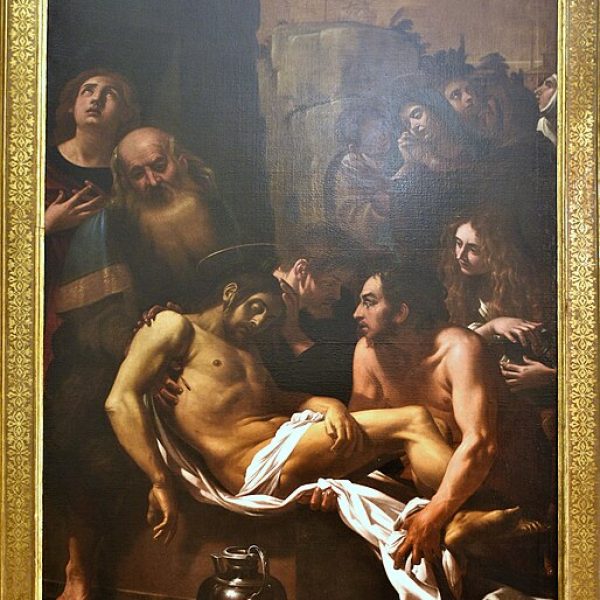
Pio Monte della Misericordia
Pio Monte della Misericordia is a charitable institution founded in 1602 in Naples with the aim of supporting the needy through works of mercy. Located in a historic building in the heart of the city, the building houses a church and a prestigious art collection, including Caravaggio’s masterpiece ‘The Seven Works of Mercy’. The Pio Monte church and picture gallery offer visitors a unique experience, combining spirituality, history and art. Even today, the institution continues its philanthropic mission, keeping alive the tradition of assistance to the less fortunate.
Treasure of San Gennaro
The Treasure of San Gennaro is an extraordinary collection of precious objects, kept in the Treasure Chapel inside the Cathedral of Naples. Considered one of the richest treasures in the world, it includes jewellery, crowns, chalices, crosses and relics donated by popes, sovereigns and the faithful over the centuries as a sign of devotion to the city’s patron saint. Among the most famous pieces are the mitre of St. Gennaro, covered with diamonds, rubies and emeralds, and the saint’s necklace, composed of a series of jewels donated by various rulers. The treasure is linked to the veneration of San Gennaro and his famous blood miracle, which is repeated three times a year.
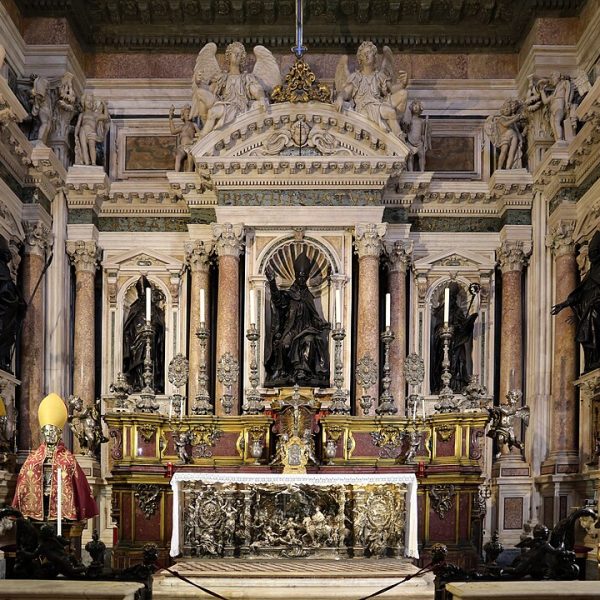
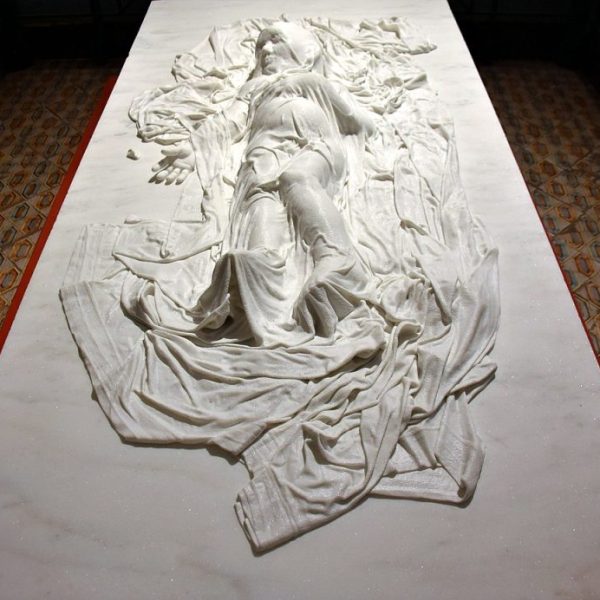
Jago Museum
The Jago Museum is an exhibition space dedicated to the work of contemporary artist Jago (Jacopo Cardillo). An internationally renowned sculptor, Jago is known for his marble works that combine classical technique and modern sensibility, addressing profound themes such as suffering, human frailty and spirituality. The museum, housed in the evocative Church of Sant’Aspreno ai Crociferi, offers visitors the opportunity to admire his sculptures in a context that amplifies the dialogue between art and sacredness. Jago’s works, often created with extraordinary detail, testify to his innovative approach and mastery in working with marble.
Botanical Garden
The Botanical Garden of Naples, founded in 1807, is an important scientific and educational institution covering some 12 hectares in the city centre. Part of the University of Naples Federico II, the garden is home to more than 9,000 plant species from all over the world, divided into different thematic sections and greenhouses. In addition to its function of research and conservation of biodiversity, the Botanical Garden is a place of great beauty, where visitors can explore historic gardens, rare plant collections and enjoy an oasis of tranquillity in the heart of Naples.
*** Translated with www.DeepL.com/Translator (free version) ***
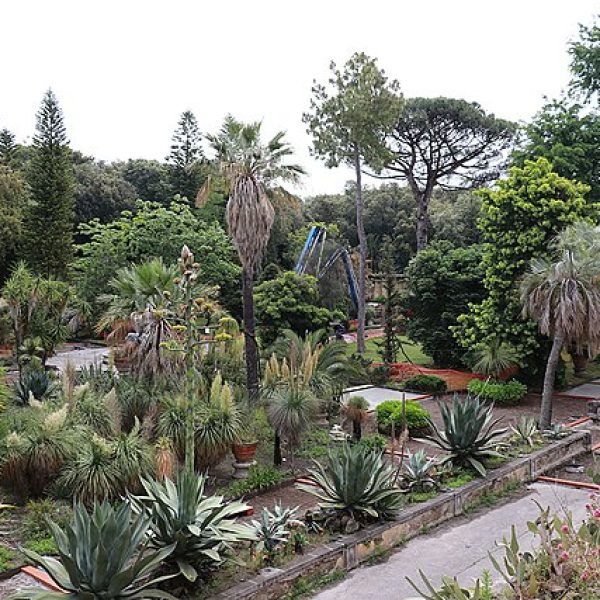
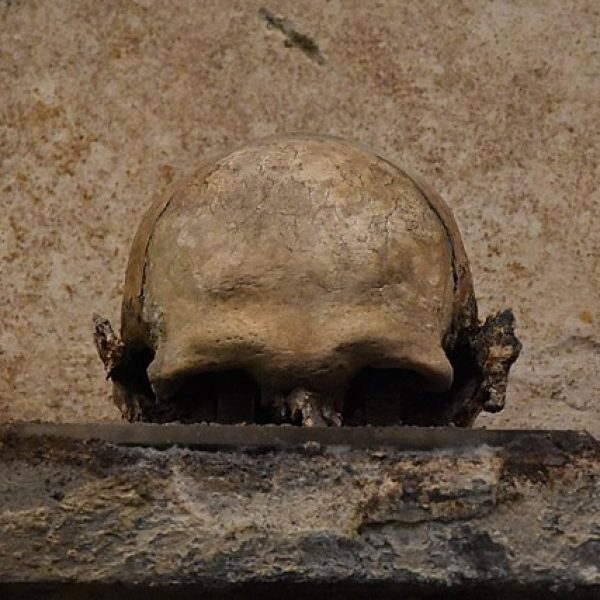
Church of Santa Luciella ai Librai
The Church of Santa Luciella ai Librai is a hidden gem in the historical centre of Naples, located near Via San Biagio dei Librai. This small church was built in the 14th century at the behest of Bartolomeo di Capua, an important councillor of Robert of Anjou. Initially, the place was dedicated to Saint Lucy, the patron saint of sight, much venerated by the booksellers and artisans who worked in the area. It is particularly famous for its connection to popular tradition and the mysteries of Neapolitan devotion, especially thanks to the figure of the ‘skull with ears’, a unique relic linked to local spiritual beliefs and rituals. This skull has fuelled popular stories and legends for centuries, as it was believed to be able to ‘hear’ the prayers of the faithful. This belief is linked to the cult of the pezzentelle souls, typical of the Neapolitan tradition, which saw the bones of the dead as intermediaries between the earthly world and the afterlife.
https://it.wikipedia.org/wiki/Chiesa_di_Santa_Luciella_ai_Librai.
Castel Capuano
Castel Capuano is one of the oldest castles in the city and represents an important historical and cultural landmark. Located near Porta Capuana, the castle takes its name from the nearby gate, which in ancient times marked the border to the city of Capua. Built in the 12th century by order of William I of Sicily, known as ‘il Malo’, Castel Capuano was initially conceived as a Norman royal residence. Subsequently, it passed into the hands of various dynasties, from the Swabians to the Angevins to the Aragonese, each of which made changes and extensions to the structure. In the 16th century, Spanish viceroy Pedro de Toledo turned the castle into the seat of the Court of Naples, a function it retained for about 500 years. During this period, Castel Capuano became known as the ‘Palazzo della Vicaria’ and also housed the prisons
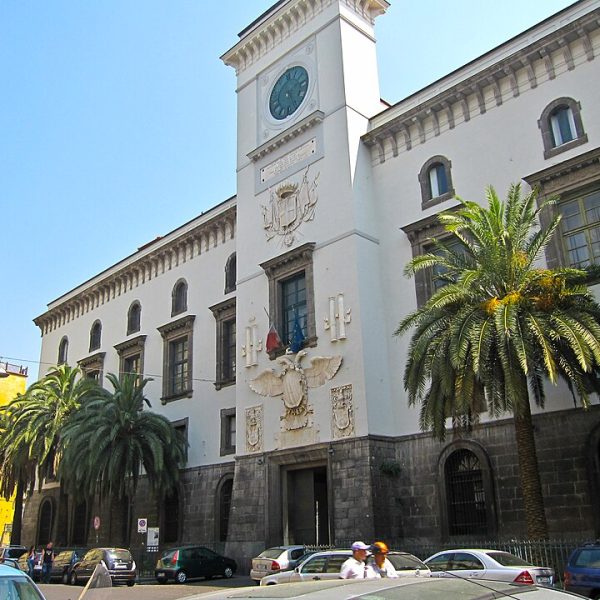
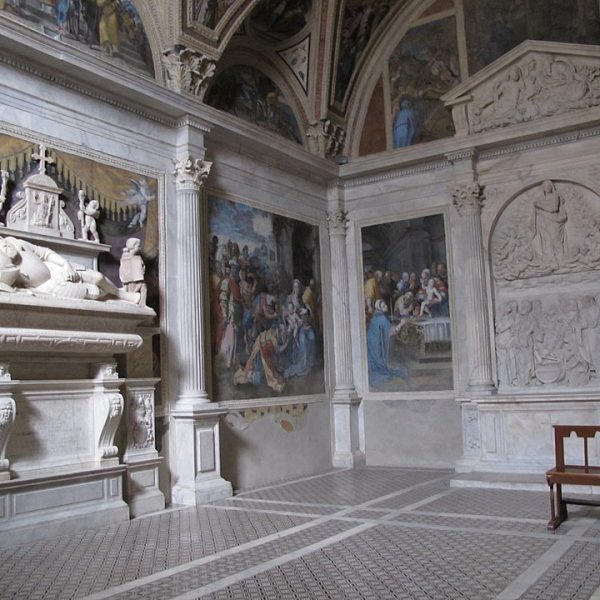
Basilica San Giovanni a Carbonara
The Basilica of San Giovanni a Carbonara is one of the masterpieces of Gothic architecture in Naples dating back to the 14th century, this church is a place of extraordinary artistic beauty, rich in history and charm. Built around 1343 by Gualtiero Galeota, a Neapolitan nobleman, on land that once housed a coal dump (hence the name ‘Carbonara’). Over the centuries, it became an important religious and cultural centre, with numerous extensions and decorations added by various noble families. What to see inside the Basilica: 1. Tomb of Ladislaus of Durazzo One of the most spectacular elements of the basilica is the funeral monument of Ladislaus of Durazzo, King of Naples. This Gothic-Renaissance masterpiece by Andrea Ciccione stands majestically behind the high altar and is one of the most impressive royal tombs in Naples. 2. Caracciolo del Sole Chapel This chapel, dedicated to the Caracciolo family, is decorated with exceptionally beautiful frescoes in an elegant Renaissance style. It is a true jewel within the basilica. 3. Somma Chapel Another example of artistic splendour, this chapel preserves Renaissance frescoes and decorations. 4. Central nave The central nave, with its sober and elegant Gothic style, leads the visitor into a solemn and evocative atmosphere. The soft light and the height of the arches create an atmosphere of spiritual recollection. 5. Monumental staircase Access to the basilica is via a scenic staircase, which makes the entrance particularly fascinating and invites the visitor to immerse himself in a timeless place.
https://it.wikipedia.org/wiki/Chiesa_di_San_Giovanni_a_Carbonara
The Monumental Complex of Donnaregina
The Monumental Complex of Donnaregina is one of Naples’ most important artistic and cultural treasures, located in the heart of the historic centre, in Largo Donnaregina. This complex includes the Church of Donnaregina Vecchia, the Church of Donnaregina Nuova and the Diocesan Museum, offering a journey through centuries of history, art and spirituality.
Atmosphere and Significance
The Monumental Complex of Donnaregina is a place that combines art, history and spirituality. Walking through its Gothic and Baroque naves, one has the impression of crossing centuries and capturing the essence of medieval and Baroque Naples.
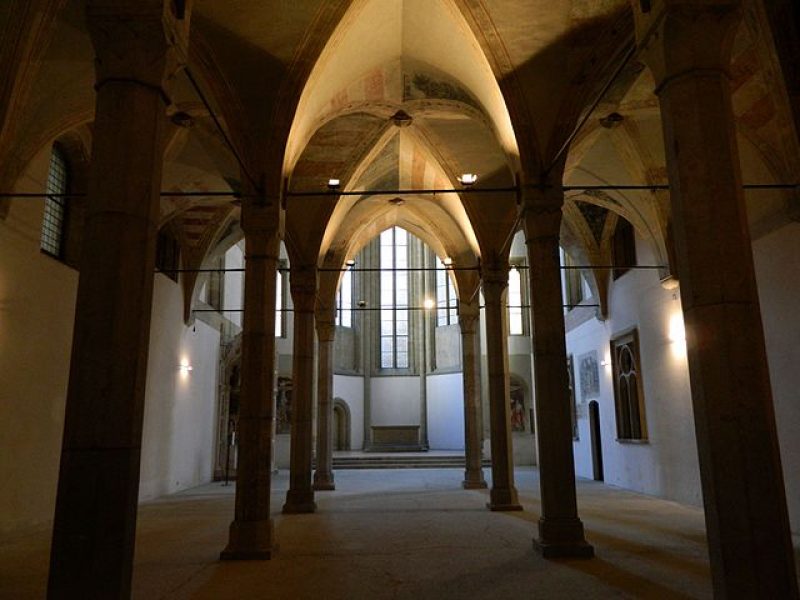
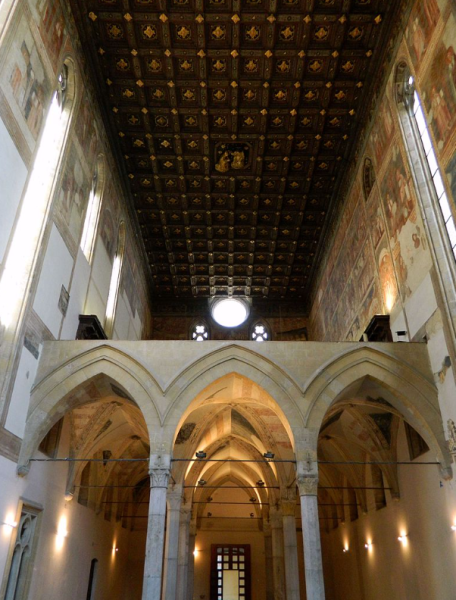
Church of Donnaregina Vecchia
Risalente al XIII-XIV secolo, la chiesa è un magnifico esempio di architettura gotica napoletana. Fu voluta dalla regina Maria d’Ungheria, moglie di Carlo II d’Angiò. Gli affreschi che decorano le pareti interne sono attribuiti a maestri giotteschi, tra cui Pietro Cavallini. Si conserva il monumento funebre della stessa Maria d’Ungheria, un’opera di grande eleganza che domina l’ambiente sacro.
https://it.wikipedia.org/wiki/Chiesa_di_Santa_Maria_Donnaregina_Vecchia
Church of Donnaregina Nuova
Built in the 17th century, the church is a perfect example of Neapolitan Baroque splendour. It has a Latin cross plan and interiors sumptuously decorated with stuccoes, frescoes and polychrome marble. The frescoes on the vault and dome are the work of Francesco De Mura, one of the great masters of Neapolitan Baroque. Also noteworthy is the high altar, adorned with precious marbles and sculptures.
https://it.wikipedia.org/wiki/Chiesa_di_Santa_Maria_Donnaregina_Nuova
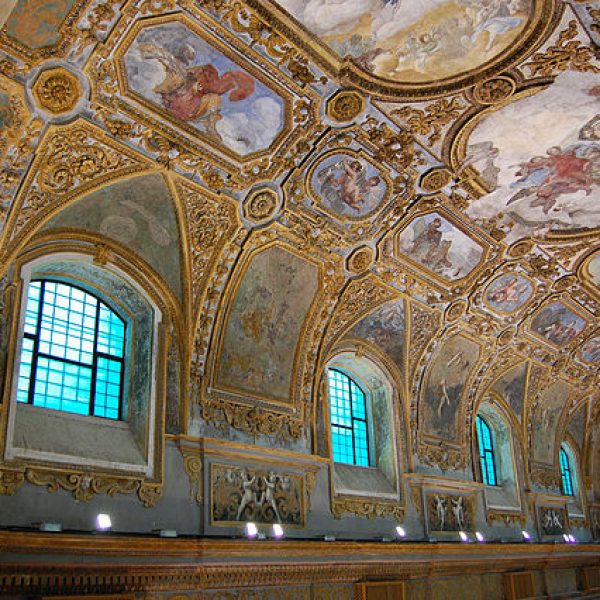
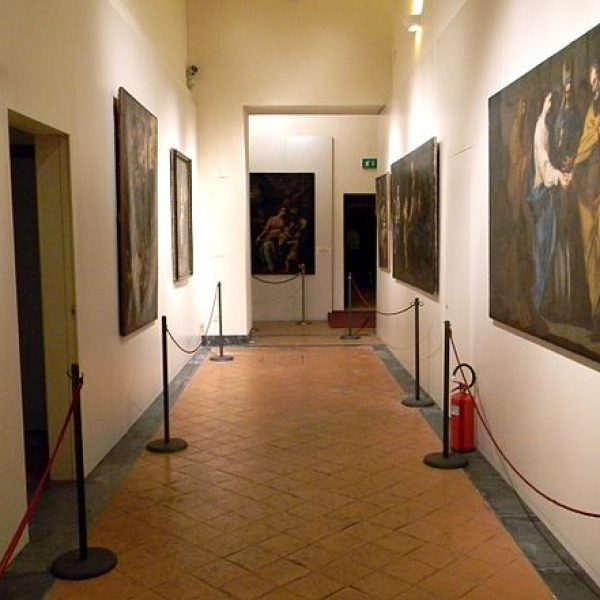
Naples Diocesan Museum
The Monumental Complex of Donnaregina houses the Diocesan Museum, opened in 2007. This space houses an extraordinary collection of sacred art from the churches of Naples and its territory. Paintings by famous artists such as Luca Giordano, Francesco Solimena and Massimo Stanzione. Relics, sculptures and liturgical vestments testify to the rich spiritual and artistic heritage of the diocese. The museum route harmoniously links the spaces of the Donnaregina Vecchia and Donnaregina Nuova, allowing visitors to explore the evolution of religious art through the centuries.
The Monumental Complex and the Girolamini Library
In the heart of Naples, along Via Duomo, stands the Girolamini Monumental Complex — a lesser-known treasure trove of history, art, and culture. Founded in 1586 by the Fathers of the oratory of Saint Philip Neri, it includes the Church of the Girolamini, two monumental cloisters, a valuable art gallery, and the renowned library. The church, a refined example of Neapolitan Baroque, features frescoes and decorations by masters such as Luca Giordano
and Francesco Solimena.
The Girolamini Library, the oldest public library in Naples and one of the most prestigious in
Italy, houses over 159,000 volumes, including incunabula, rare manuscripts, and sixteenth-century works. Specializing in philosophy, theology, and history, it has been a vital resource for scholars and intellectuals for centuries.
Beyond its historical and artistic value, the complex has also witnessed intriguing events, including the disappearance of precious books, some of which were later recovered and restored. Today, thanks to conservation efforts, it is once again open to the public, offering visitors and history lovers an immersive and fascinating experience.
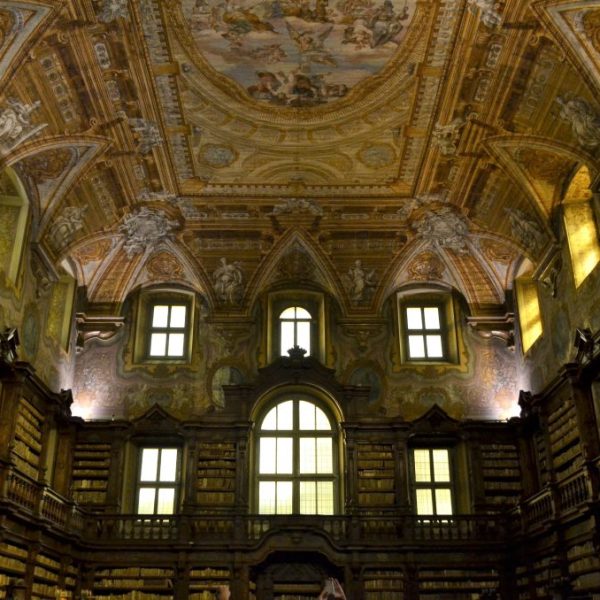
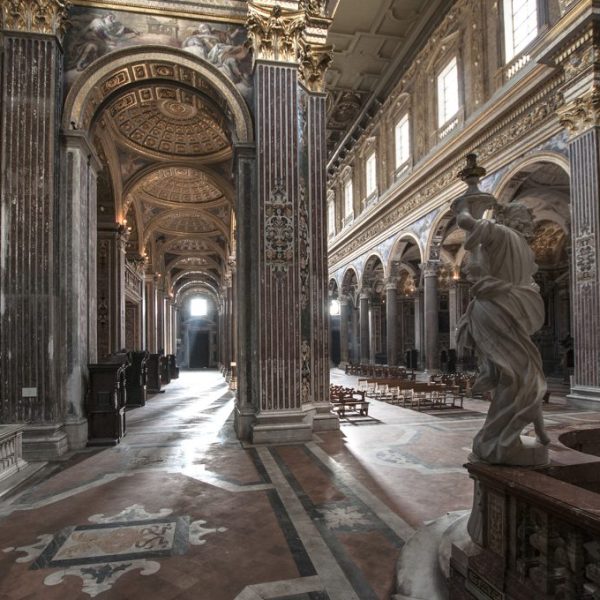

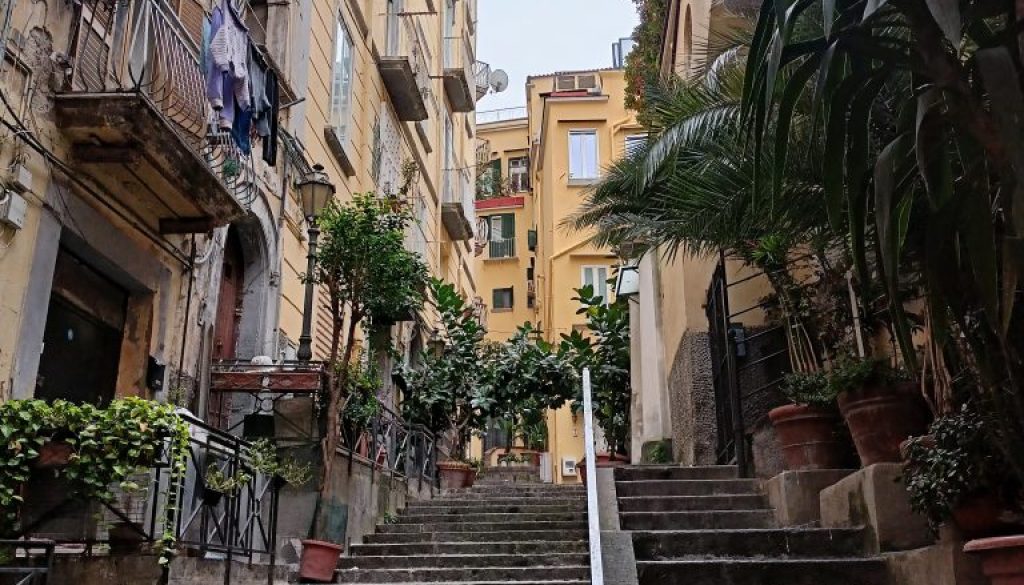
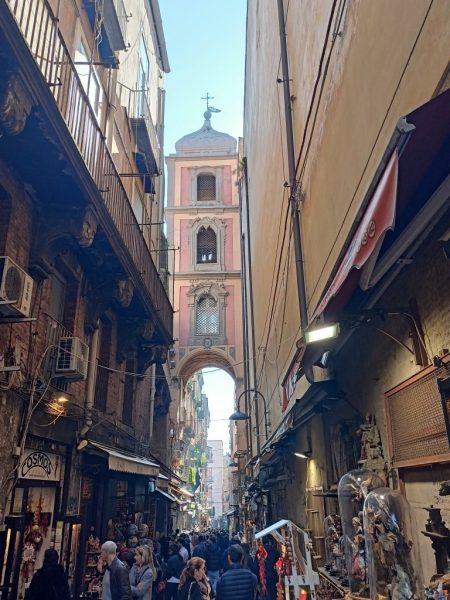
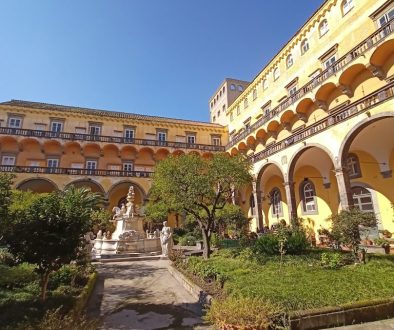
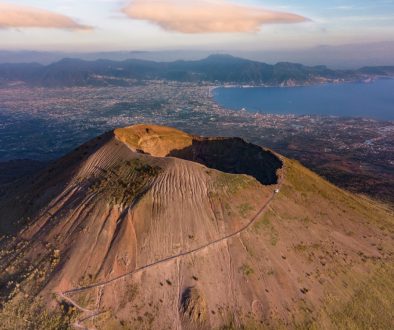
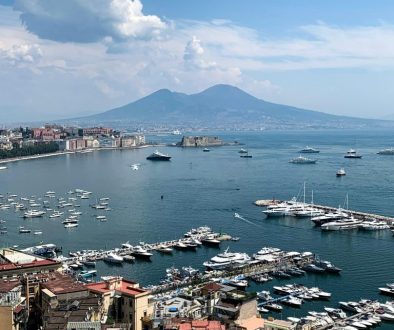
The Best Areas in Naples, Italy, to Stay | Napoli Domus
February 2, 2025 @ 7:41 am
[…] to major attractions: From the Naples Cathedral (Duomo) to Spaccanapoli, the National Archaeological Museum, and Piazza del Plebiscito, the Historic Center is the beating […]
Exploring Mount Vesuvius: Complete Guide to Visiting Naples the Most Famous Volcano in Italy | Napoli Domus
February 5, 2025 @ 10:18 am
[…] Napoli Domus offers the perfect accommodation, situated between the central train station and the historic center of the city, ideal for exploring all the wonders of Naples and Campania region. Book your stay today […]
Exploring the Naples Historical Centre: A Journey Through Time and Culture | Napoli Domus
February 16, 2025 @ 7:08 am
[…] Historic Center of Naples is not just a physical place, but a true immersion into the heart of the city. This area tells the […]
February 27, 2025 @ 5:09 pm
What an excellent presentation. All the information is well organized. Although I visited Napoli many times and saw many of its numerous attractions, I found quite a few new places that I have not seen before, and will definitely try to include into my schedule of the upcoming trip to Italy.